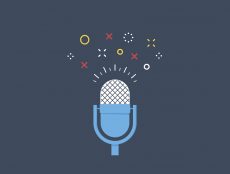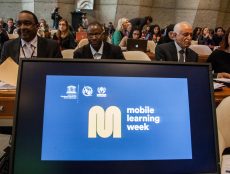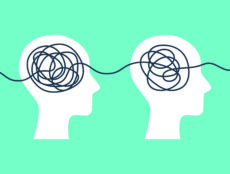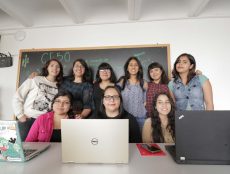
Articles
Editor’s Picks
Industry News
Interviews
K-12
Amplify Launches Adaptive Reading Supplement
By Henry Kronk
March 28, 2019
Earlier this month, adaptive algorithm-delivered personalized learning made another step forward into U.S. classrooms. Amplify, a curriculum and course supplement provider, announced the launch of Amplify Reading, a K-8 early literacy instruction aid.
The software assesses students’ reading skills, delivers appropriate content, and repeats as students become stronger readers. eLearning Inside got in touch with Amplify SVP of Product Melissa Ulan to learn more.
Amplify Reading
“We worked with a lot of really amazing researchers in the field of literacy and comprehension to really understand how children learn to read and take this latest information to design a new program,” Ulan said. “One of the things that’s really special about Amplify Reading is we have this really engaging narrative arc in the program. We spent a lot of time thinking about what do students in Kindergarten need developmentally? What do 3rd graders need? What do 5th graders need? We created this narrative journey that takes students through the experience that’s always appropriate for who they are based on the grade level they’re in.
“Here’s where personalization starts coming in. While that narrative layer ‘grows up’ with students, there’s an underlying skill progression or skill map that lets us know what do kids need to learn to read and then we place them based on our adaptive technology on that skill progression. That way, they’re growing up with the narrative but getting the right skill instruction and practice that’s just right for them.”
The Engineer’s Solution to Classroom Teaching
This language, such as ‘skill map,’ derives from remarks made by Amplify CEO Larry Berger on the subject of personalized learning. In a panel last year at ASU GSV Summit, Berger described personalized learning as an engineer’s solution to the challenge of teaching a classroom of students. To paraphrase, students learn best when they receive individual instruction. But most classrooms with roughly twenty students contain just one teacher. Personalized learning delivered via adaptive software on a device, therefore, allows ongoing ‘one-to-one’ instruction without involving more human teachers.
But it’s very difficult to teach a student with a software program. As Berger related to Education Week’s Rick Hess, “You start with a map of all the things that kids need to learn. Then you measure the kids so that you can place each kid on the map in just the spot where they know everything behind them, and in front of them is what they should learn next. Then you assemble a vast library of learning objects and ask an algorithm to sort through it to find the optimal learning object for each kid at that particular moment. Then you make each kid use the learning object.
“Here’s the problem: The map doesn’t exist, the measurement is impossible, and we have, collectively, built only 5% of the library.”
With the release of Amplify Reading, it appears some of that assessment has developed.
“We really know the map, or how to go about teaching students to learn to read,” Ulan said. “Early literacy is one of those areas where researchers have really studied it. It’s incredible to have this map underlying Amplify Reading because we really know where to put students and how to support them.”
“Because students are all in this same story line that’s appropriate for their age, they’re able to take the experience one-on-one. (Our program is largely students on a device using it.) But they can talk about it with their peers and there’s no stigma associated with what skill level they’re using based on that personalized algorithm because they’re all still sharing in that engaging story.”
Amplify also offers a similar supplemental product for math instruction.
“What we know about early math and early literacy is that there has been a ton of research in these areas. We have been able to prove what are the building blocks or what is the science behind learning how to read,” Ulan said. “At Amplify, we actually have our own learning scientists on our teams and what’s really nice about our programs is we’re able to learn, too, from our students using them.
“So not only do we know what that high-level math is on how students learn to read or how they learn early math, but we’re able to refine the details of the program we’ve built, the specifics of ‘this compound set before this compound set’ or activities the students do, this game, or this part of the game, based on the data coming in about how users are learning in our program. So we can always improve it.
“In other areas—not early literacy and not early math—while there is research in them, my understanding is that there’s not as much and that we haven’t figured out the map and the assessments that go into the programs.
“Thinking about a talk Larry gave recently, one of the things he talked about was science and where we’re at with science. And it’s just a great example—there are certain areas that we have figured out, but the exact sequencing of them … there’s just more research that needs to be done in order to understand that same predictiveness or that knowledge that we do around early literacy and math.”
Like many other educators, Amplify doesn’t think artificial intelligence is the only means by which one can personalize learning.
“For subject areas and grade levels where we don’t have that perfect map figured out, there are other things we can do to truly deliver a personalized experience or supporting students with what they need at the right time.
Other Forms of Personalization
“One of our beliefs around personalized learning is that we can do this through ‘scaffolding’ or differentiated support. This means giving students the right supports that they need to access materials. This is something we do a lot in our core curriculum products. Those are the lessons students and teachers use every day in the classroom.”
“We really want to ensure that, as middle school teachers are delivering whole group instruction, they’re still able to provide that rich, scaffolded support or differentiation to help all their students move along.
“Our programs allow teachers to provide the right level of scaffolding for all the students in the classroom to help them access the material of the day. Imagine you’re reading “The Tell-Tale Heart” [a short story by Edgar Allen Poe] in 7th grade. It’s a really difficult text. We really want students to be able to access complex texts, but we know that, because students are at different levels with their skills, some will need more supports than others. What Amplify Reading allows is for teachers, who know their students better than anyone to use data from our program to then make certain decisions that will automatically provide students with scaffolding, support within a lesson so that they can all access that text.
“What I loved going into classrooms and seeing is that all those kids in that classroom can then have a rich discussion together about what they read using the support that was delivered to them.
“Another way we think about personalizing the learning experience for students is giving really personalized feedback. This is something we’ve worked on a lot in our middle school programs, our Fractions program (another supplemental program). Amplify Reading also has a really special approach to feedback. We know personalizing feedback is another way to create a personalized learning experience with students.”
Featured Image: Patricia Prudente, Unsplash.









[…] With the intense study and application of this framework, your career will quickly go up, because this area is developing incredibly dynamically. […]